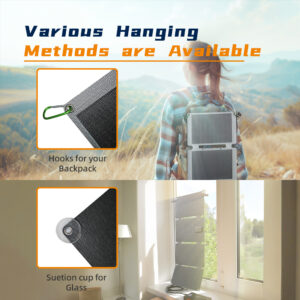Solar Panels: Series vs. Parallel Connections Explained
When setting up a solar panel system, one of the key decisions you’ll face is how to connect your solar panels: in series or parallel. This choice directly impacts the efficiency of your system. Whether you’re working with RV solar panels, flexible solar panels, or portable solar panels, understanding the differences between series and parallel configurations is essential to maximize performance.
Series vs. Parallel: The Basics
Series Connection: Connecting solar panels in series involves linking them end-to-end. This setup adds up the voltage of each panel while keeping the current (amperage) constant. For example, connecting five 12V panels in series results in a total of 60V. This configuration is ideal when a higher voltage is needed, such as for grid-tied systems. It’s also useful when sourcing panels from a solar panel supplier or solar panel wholesale provider, as higher voltage arrays may be required for larger installations.
Parallel Connection: In a parallel setup, all positive terminals are connected together, and all negative terminals are connected together. This keeps the voltage the same as a single panel but increases the total current. For instance, five 12V panels connected in parallel still produce 12V, but the current is the sum of each panel’s output. Parallel connections are great for systems needing higher current, such as off-grid battery setups often used with portable solar panels and flexible solar panels.
Key Terms to Understand
- Voltage (V): The difference in electric potential between two points.
- Current (I): The rate at which electricity flows, measured in amperes (A).
- Output Voltage: The voltage released by a solar panel.
- Output Current: The current produced by the panel, which increases in parallel configurations.
Pros and Cons of Series Connections
Pros:
- Increased Voltage: Higher voltage allows for efficient energy transmission, which is especially helpful in large solar arrays provided by solar panel manufacturers.
- Simpler Wiring: Since the current is lower, you can use thinner cables.
- Better Low-Light Performance: Series-connected systems often perform better in low-light or partially shaded conditions.
Cons:
- Dependency on All Panels: A shaded or underperforming panel in the series will reduce the output of the entire array.
- Requires High-Voltage Inverter: Systems need an inverter that can handle high voltage, which might raise costs.
Pros and Cons of Parallel Connections
Pros:
- Independent Panel Operation: If one panel is shaded or malfunctions, the others continue working.
- Increased Current: Useful for off-grid or battery-charging systems, particularly in RV solar panels.
- Lower Voltage Risk: Parallel connections are safer for low-voltage setups like portable solar panels.
Cons:
- More Complex Wiring: Higher current requires thicker wires and more intricate setups.
- Efficiency Loss: Mismatched panels in parallel may reduce system efficiency.
Which Configuration is Right for You?
The choice between series and parallel connections depends on your needs:
- Series: Best for maximizing voltage in sunny, unshaded areas. Perfect for grid-tied systems or when sourcing panels from solar panel manufacturers for large-scale installations.
- Parallel: Ideal for off-grid systems needing higher current, such as for RVs, boats, or flexible solar panels used in mobile setups.
Frequently Asked Questions
Can I mix series and parallel connections? Yes. Many solar power systems use a combination of both to meet specific voltage and current requirements. Ensure all panels are compatible and sourced from trusted solar panel suppliers.
Do solar panels charge faster in series or parallel? Series connections often charge faster due to higher voltage, but this depends on various factors like sunlight intensity and system setup.
Where can I source quality solar panels for my setup? It’s essential to choose reputable solar panel wholesale providers or solar panel manufacturers for long-term performance. Many RV solar panels, flexible solar panels, and portable solar panels are available from these trusted sources, ensuring you get the best products for your needs.
Conclusion
Understanding the difference between series and parallel connections is key to optimizing your solar system’s performance. Whether you’re setting up a large system from a solar panel supplier or working with portable solar panels for off-grid use, choosing the right configuration will ensure efficiency and energy savings.
If you are finding solar panel factories, feel free to contact our team. We offer top-quality solar solutions, including portable solar panels, flexible solar panels, and solar backpack wholesale options, to meet all your renewable energy needs.







